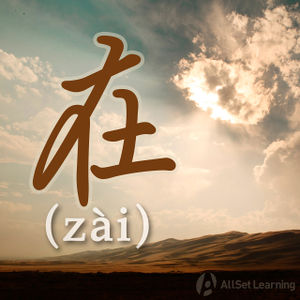Difference between revisions of "Expressing actions in progress with "zai""
| Line 22: | Line 22: | ||
<div class="liju"> | <div class="liju"> | ||
| − | * 她 <em>在</em> 看 书。<span class="trans">She is reading | + | * 她 <em>在</em> 看 书。<span class="trans">She is reading.</span> |
* 我 <em>在</em> 喝 啤酒。<span class="trans">I am drinking beer.</span> | * 我 <em>在</em> 喝 啤酒。<span class="trans">I am drinking beer.</span> | ||
* 我们 <em>正在</em> 上课,请 稍等。<span class="trans">We are in class, please wait a bit.</span> | * 我们 <em>正在</em> 上课,请 稍等。<span class="trans">We are in class, please wait a bit.</span> | ||
Revision as of 10:09, 15 November 2013
-
Level
-
Similar to
-
Used for
-
Keywords
在 (zài) and 正在 (zhèngzài) can be used as an auxiliary verb to express that an action is ongoing or in progress. This is often the equivalent of present continuous in English. 正在 emphasizes ongoing or in progress of an action a bit more than 在。
Structure
Subject + 在 + Verb + Object
or
Subject + 正在 + Verb + Object
Examples
- 她 在 看 书。She is reading.
- 我 在 喝 啤酒。I am drinking beer.
- 我们 正在 上课,请 稍等。We are in class, please wait a bit.
- 你们 正在 吃饭,我 过 会儿 再 说。We are eating, I'll talk a little later.
See also
- Aspect particle "zhe"
- Expressing actions in progress (full form) (more advanced usage)
Sources and further reading
Books
- Basic Patterns of Chinese Grammar (pp. 41-2) →buy
- Chinese: An Essential Grammar, Second Edition (pp. 60-1) →buy
- Integrated Chinese: Level 1, Part 1 (3rd ed) (pp. 209-10) →buy
- New Practical Chinese Reader 2 (新实用汉语课本2) (pp. 218-9) →buy



